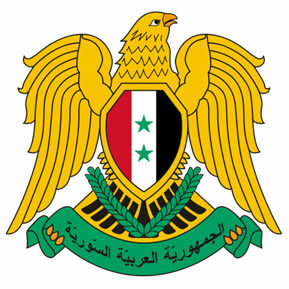Located in the Middle East and bordering the Mediterranean Sea, Syria borders Turkey (to the north), Iraq (to the east), Jordan (to the south), Israel (to the southwest) and Lebanon (to the west). Most of the national territory is covered by deserts.
Archeological research confirms that the occupation of the region, which currently corresponds to Syria, took place over 5,000 years ago. This fact provided the country with a series of historical elements: archaeological sites, Roman ruins in the city of Palmyra; medieval castles from the Crusades; Islamic buildings in Damascus.
Throughout history, the territory of Syria has been dominated by Persian, Macedonian, Roman, Arab and Turkish-Ottoman empires. France, during the first half of the 20th century, carried out the colonization process in the country, which gained independence on April 17, 1946.
Syria is a major opponent of Israeli policy, with the two nations involved in an armed conflict, called the Six-Day War, in 1967. The United States accuses Syria of funding anti-Israel terrorist groups, in particular the Lebanese Hezbollah and the Palestinian Hamas.
The national economy has in the exploration of oil and natural gas the main source of income. Another activity of fundamental importance is agriculture, in which olives, fruits, vegetables, vegetables and cotton are grown. The industry, in turn, is underdeveloped, and operates in the following segments: chemical, petrochemical, leather, textile and food.
Do not stop now... There's more after the advertising ;)

Syria Coat of Arms
Syria data:
Territorial extension: 184,050 km².
Location: Middle East.
Capital: Damascus.
Climate: Mediterranean (coastal) and arid (inland).
Government: Presidential Republic (military dictatorship since 1970).
Administrative division: 14 districts.
Languages: Arabic (official), Kurdish.
Religions: Islam 92.1%, Christianity 5.2% (Orthodox 2.7%, others 2.5%), no religion and atheism 2.7%.
Population: 21,906,156 inhabitants. (Men: 11,056.330; Women: 10,849,826).
Composition: Syrian Arabs 90%, Kurds 5.9%, Circassians, Turks and Armenians 4.1%.
Demographic density: 119 inhab/km².
Average annual population growth rate: 3.2%.
Population residing in urban areas: 54.5%.
Population residing in rural areas: 45.5%.
Undernourished population: less than 5%.
Infant mortality rate: 15 deaths per thousand live births.
Life expectancy at birth: 73.9 years.
Illiteracy: 17%.
Households with access to drinking water: 89%.
Households with access to a health network: 92%.
Human Development Index (HDI): 0.589 (average).
Currency: Syrian Pound.
Gross Domestic Product (GDP): $55.2 billion.
GDP per capita: $1,883.
External relations: World Bank, IMF, UN.
By Wagner de Cerqueira and Francisco
Graduated in Geography
Brazil School Team
countries - geography - Brazil School



